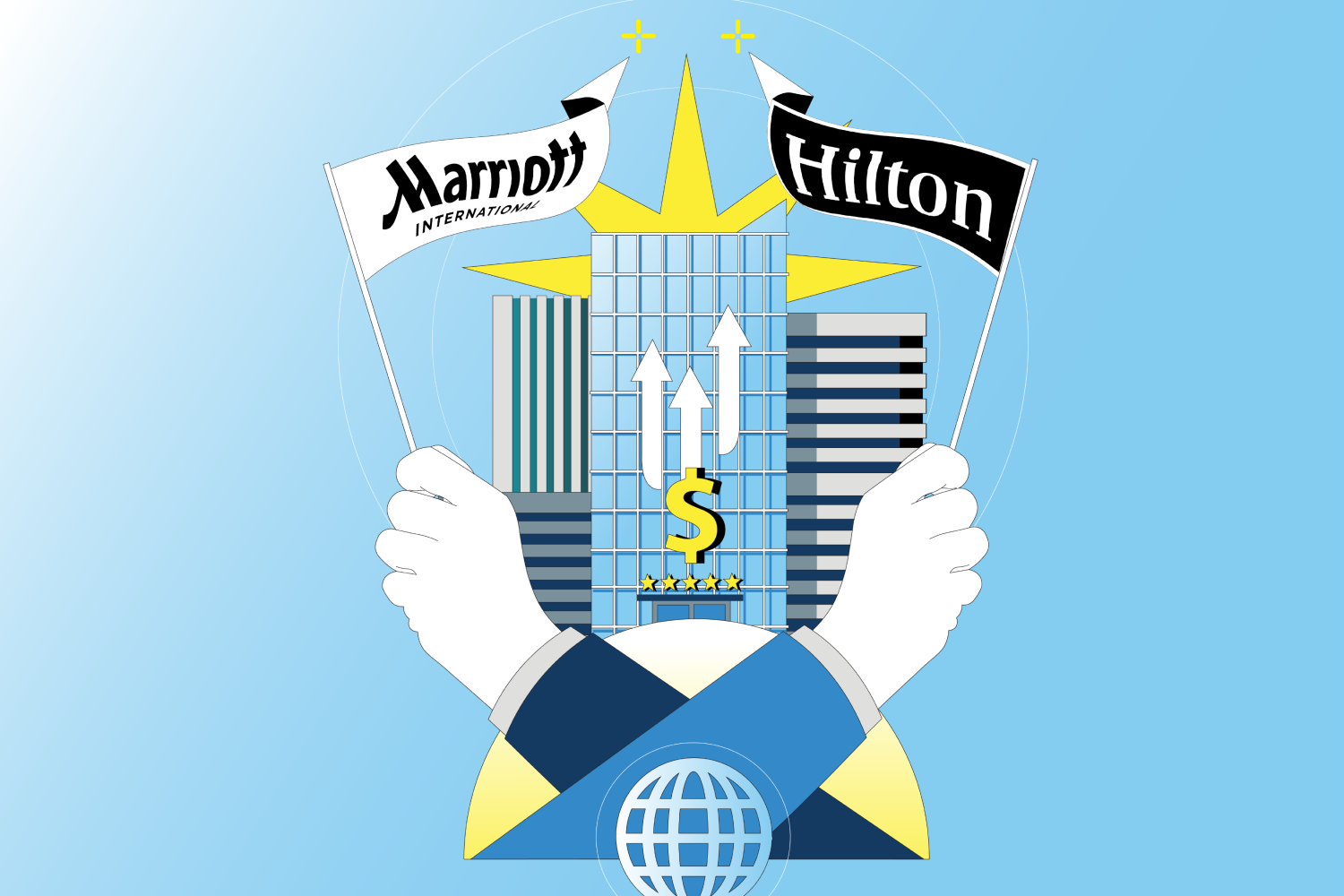Skift Take
Marriott's hotels are nearly all premium or better. The customers who can afford them have mostly been insulated from budget worries. So why is the company's strategy to attract more price-conscious guests?
One under-recognized reason Marriott International raised its 2023 outlook for profitability on Tuesday was that its hotels are nearly all premium or better.
The vacationers, road warriors, and group meeting planners who can afford its properties were relatively insulated from economic concerns in the past year compared to the population as a whole.
So it’s counterintuitive that the hotelier’s strategy is to expand its share of more affordable hotels — which presumably would expose it to more swings in demand.
Marriott’s Robust Quarter
The world’s largest hotelier reported strong second-quarter performance.
- The Bethesda, Maryland-based company boosted its net income 7% to $726 million from a year earlier.
- It raised its full-year forecast for net income to at least $2.63 billion.
- Its revenue rose about 16% to approximately $1.6 billion after deducting the revenue it collected and passed back to its managed and franchised properties.
The company saw operational strength across its portfolio.
- Marriott’s revenue per available room — a key industry figure — rose 13.5% from a year earlier.
- The company boosted its average worldwide pricing by 6% year-over-year.
- “In the U.S. and Canada, leisure revenues rose 1% above last year’s sensational second quarter,” said president and CEO Anthony Capuano. “Demand in this market has been stabilizing on a year-over-year basis with travelers from the region increasingly taking vacations overseas now that pandemic-related travel restrictions are behind us.”
- “As we look into the third quarter, the consumer is generally holding up well, and our forward bookings remain solid,” said chief financial officer Kathleen Oberg.
Growing Interest in Midscale Hotels
Nearly all of Marriott’s more than 30 brands are premium or above, ranging from Courtyard to The Ritz-Carlton. This year Marriott has taken steps to add more affordable hotels one or two tiers down. Called “midscale,” this category means hotels that are fancier than “economy” while still being “affordable.”
- In May, the company officially absorbed City Express, a midscale brand.
- In June, Marriott announced an extended stay brand in the “affordable midscale” category in North America.
- In July, the company revealed a licensing deal with MGM Resorts that will make rooms at 17 MGM resorts bookable via its site and app by year-end. Many of the properties have midscale offerings. “It’s not just some sort of loyalty lockup,” Capuano said. “It’s structured to look a lot more like a franchise agreement.”
- On Tuesday, Marriott suggested it would make a midscale push in Europe. “We’re excited about what we see as the possibility for a conversion mid-scale brand in EMEA [Europe and the Middle East region] and look forward to some announcements in the back half of the year regarding that,” Capuano said.
- To be sure, the company has the Fairfield Inn brand in the midscale category, with more than 1,000 properties. But Fairfield is in the “upper” midscale segment.
- “Marriott is clearly sending a message they want to play more of a role in the midscale market, which signifies an evolution of how they are thinking about their brands,” wrote analysts at Melius Research in a report on Monday.

A couple of factors drive Marriott’s new fascination with midscale hotels.
- The earnings Marriott generates for adding each additional hotel exceeds the marginal cost, on average.
- So investors are eager to see Marriott sustain a fast-growing pipeline of new properties because that implies a predictable rise in earnings.
- Marriott’s footprint growth remains brisk in the short term. On Tuesday, the company forecasted it would grow its net rooms this year by between 6.4% and 6.7%
- Yet long-term Marriott faces stiff competition from rivals like Hilton, Accor, IHG, and Hyatt when it comes to acquiring more supply of premium hotels. Over time, growth is getting harder to find, relatively speaking. So the company wants to move “downscale” to sustain its footprint growth.
- Another factor driving Marriott’s interest is that midscale properties are popular with developers, investors, and owners. Midscale properties tend to cost relatively less to operate, and lenders tend to be quicker to finance them, than more elaborate projects.
Ironic Strategy for its Hotel Pipeline?
There’s something of an irony in Marriott’s move modestly downscale. The more it adds “affordable” properties to the mix, the more exposed it will become to travelers who are less resilient in economic downturns.
Yet it’s been precisely because Marriott’s customer base has been disproportionately more financially robust that the hotelier has been able to outperform many other types of businesses in the post-pandemic recovery. Marriott’s stock price last week hit an all-time high, having rallied 18.6% over the past few months, while the S&P 500 index has risen only 10%.
Suppose Marriott succeeds in diversifying its customer base by adding more affordable hotels. In that case, it will expose itself more to the volatility of travel buyers whose booking patterns are linked to macroeconomic trends. In the next economic downturn, its fortunes might not prove as resilient.
But that’s tomorrow’s problem.
Or perhaps it won’t be a problem. Expect that Marriott executives will make a case to investors during a day of presentations on September 27 about why they believe they will be able, over time, to convert customers who enter the Marriott system by staying at affordable hotels to “trade up” to pricier properties during repeat stays.
Many investors won’t care whether Marriott’s strategic shift toward adding more midscale properties creates complications in the future. They’ll have pocketed any potential price gains thanks to an expected short-term earnings boost from hotel development growth and can move on if necessary years from now.
Daily Lodging Report
Essential industry news for hospitality and lodging executives in North America and Asia-Pacific. Delivered daily to your inbox.
Have a confidential tip for Skift? Get in touch
Tags: earnings, future of lodging, hotel earnings, marriott, Marriott International
Photo credit: JW Marriott Goa's pool. Source: Marriott International.

